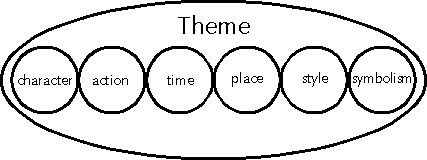
The unities were a theatrical device derived from Aristotle's Poetics around the sixteenth century. They were considered vital to the structure of a play so as to keep an audience from being confused, and to ensure some level of mimesis in the work. The original unities were the unity of time, events needed to take place within a single day; the unity of place, the stage only represented a single location; and the unity of action, all events within a play have a causal relationship to one another forming a complete story with a beginning, a middle and an end [Hol80].
As time went by the unities as an overall concept were denounced, defended and eventually abandoned. Plays could be performed where the action spanned several generations and numerous locations, as evidenced by Shakespeare's works. Unity of action, though, has remained as a core element to storytelling of all sorts. Nevertheless, the unities have regained usefulness in generating coherence within stories told using computers.
Audience confusion is a very real problem within a story where the plotting structure is loose and changeable. Therefore, any devices that might be used to provide a thread of continuity are going to be valuable commodities here. The broadest and main unifier for a story is its theme under which the other unities will assist to further create coherence amongst events. To the traditional unities I have added character, style and symbolism. Unlike the original critics who debated this subject, I do not believe that all of these unities need to be present to make a digitally based story work. Yet, one or more of these will be evident in a digital work that is still recognisably a story.

Copyright 1999 Katherine Phelps